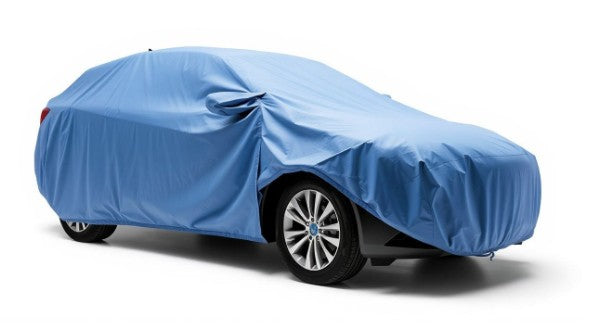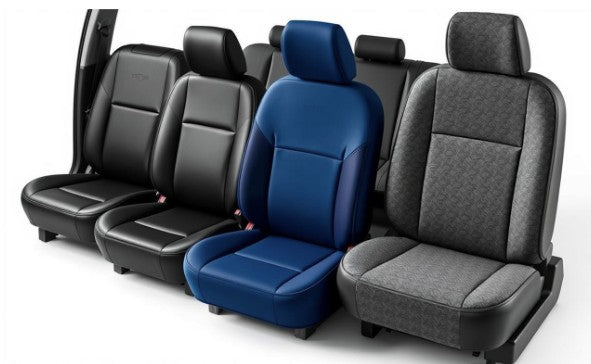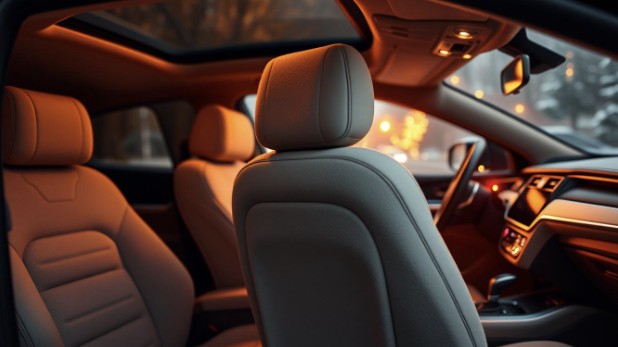Car covers are often marketed as the perfect solution for protecting your vehicle from environmental damage, bird droppings, and UV rays. While they certainly offer benefits for many vehicle owners, understanding the potential drawbacks is crucial before investing in one. This comprehensive guide examines the cons of car covers that manufacturers rarely discuss, helping you make an informed decision about whether a car cover is right for your specific situation.
Understanding the Purpose of Car Covers
Before diving into the disadvantages, it's important to understand what car covers are designed to do. Car covers are protective layers of fabric that shield vehicles from dust, UV rays, moisture, bird droppings, tree sap, and minor physical damage. They come in various materials and designs, each intended for specific environments and protection needs.
Many car owners purchase covers expecting complete protection, but the reality is more nuanced. While quality covers can provide significant benefits in certain situations, they also come with several drawbacks that might make them impractical or even potentially harmful in some circumstances.
Perceived Benefits
- Protection from UV rays and paint fading
- Shielding from dust, bird droppings, and tree sap
- Barrier against light scratches and dings
- Reduced frequency of washing
- Potential theft deterrent
Potential Drawbacks
- Risk of paint damage from improper use
- Moisture trapping leading to rust
- Daily inconvenience of application/removal
- Wind-related issues and abrasion
- Material degradation over time
Moisture Trapping and Potential Rust Issues
One of the most significant car covers cons is their potential to trap moisture against your vehicle's surface. This is particularly problematic with non-breathable materials or when covers are placed on already-damp vehicles.
When moisture becomes trapped between the cover and your car's surface, it creates an ideal environment for rust and corrosion to develop. This humid microclimate can actually accelerate damage rather than prevent it, especially in areas with high humidity or frequent rainfall.
Real-world example: A polyester cover left on a damp vehicle overnight can prevent natural evaporation, keeping moisture in contact with the paint and metal surfaces for extended periods. Over time, this repeated exposure can lead to oxidation and eventually rust formation, particularly around seams and panel edges.
Even breathable covers can cause problems if used incorrectly. If you cover your car while it's wet from rain or washing, the cover may slow the drying process, extending the time moisture remains in contact with your vehicle's surface.
Paint Scratches from Improper Use
Contrary to their protective purpose, car covers can actually cause scratches under certain conditions. This typically happens when dust or debris gets trapped between the cover and the vehicle's surface, creating an abrasive effect when the cover moves.
Wind is a major culprit in this scenario. On windy days, even secured covers can shift and move against your car's paint, essentially turning trapped particles into sandpaper. Over time, these micro-movements can create a network of fine scratches that dull your vehicle's finish.
"Many car owners don't realize that using a cover on a dirty car is one of the fastest ways to create swirl marks and scratches in their paint. Always wash your vehicle before applying a cover if surface contamination is present."
— Professional Auto Detailer
Poorly fitted covers exacerbate this issue. Universal-fit covers that don't conform closely to your vehicle's contours are more likely to flap and move in the wind, increasing the risk of abrasion damage. This is why many experts recommend model-specific covers if you decide to use one at all.
Daily Inconvenience and Time Consumption
Using a car cover cons include the significant time and effort required for daily application and removal. For vehicles driven regularly, this process can become tedious and impractical, especially in adverse weather conditions.
Consider the typical scenario: You arrive home after work and need to cover your car. The process involves retrieving the cover, unfolding it, carefully placing it over the vehicle, and securing it properly. This can take 5-10 minutes under ideal conditions. In the morning, you'll need to remove the cover, fold it properly (while keeping it clean), and store it before driving away.
Time cost calculation: If covering and uncovering your car takes 15 minutes daily, that's over 90 hours per year spent just on car cover management—nearly four full days of your life annually.
This inconvenience is amplified in challenging weather. Trying to apply a cover during windy conditions can be frustrating and sometimes nearly impossible for one person. Similarly, removing and folding a wet cover after rain is unpleasant and creates the additional problem of storing a damp cover.
Material Degradation and Replacement Costs
Car covers, especially those used outdoors, are subject to the same environmental factors they're designed to protect against. Ironically, this means they degrade over time, requiring periodic replacement that adds to the overall cost of ownership.
UV radiation is particularly damaging to cover materials. Even covers marketed as "UV-resistant" will eventually break down from sun exposure, becoming brittle, faded, and less effective. This degradation can happen surprisingly quickly in sunny climates, sometimes rendering covers ineffective within a year or two.
|
Cover Material |
Average Lifespan (Outdoor Use) |
Common Failure Points |
Replacement Cost Range |
|
Basic Polyester |
6-12 months |
UV breakdown, tearing at stress points |
$30-$80 |
|
Polypropylene |
1-2 years |
Elastic failure, water resistance loss |
$70-$150 |
|
Multi-layer Fabric |
2-4 years |
Seam separation, inner layer breakdown |
$150-$300 |
|
Premium Solutions |
4-7 years |
Fastener failure, reduced breathability |
$250-$500+ |
Wind damage is another common issue, with covers developing tears at stress points or where they rub against sharp edges of the vehicle. Once a cover begins to tear, the damage typically spreads quickly, rendering the entire cover unusable.
Fit Issues and Model Compatibility
Finding a properly fitted car cover can be surprisingly challenging. Universal covers rarely provide an ideal fit for any specific vehicle, while model-specific covers are significantly more expensive and become obsolete when you change vehicles.
Poor fit creates several problems that undermine the cover's protective purpose. Loose sections can flap in the wind, causing the abrasion issues mentioned earlier. Gaps in coverage allow dust, moisture, and debris to enter, concentrating them in certain areas rather than keeping them away from the vehicle entirely.
Warning: Covers that are too small can stretch tight across sharp edges or features, creating pressure points that can damage both the cover and your vehicle's finish over time.
Even custom-fit covers may not account for modifications or accessories. Aftermarket mirrors, antennas, spoilers, or body kits can create fit issues that allow wind to get underneath the cover or cause stress points that lead to tearing.
Wind-Related Problems and Security Challenges
Wind presents one of the most persistent challenges for car cover users. Even with securing straps and cables, strong winds can partially dislodge covers, causing them to flap violently against the vehicle's surface.
This wind action creates multiple problems: it can cause the abrasion damage mentioned earlier, potentially tear the cover at stress points, and in extreme cases, completely remove the cover from the vehicle. Lost or damaged covers represent both a financial loss and leave your vehicle suddenly unprotected.
How can I prevent my car cover from blowing away?
While additional straps and bungee cords can help, they're not foolproof in high winds. Some owners resort to elaborate tie-down systems, but these add to the daily inconvenience factor. In areas prone to high winds, a car cover may simply not be practical for regular use.
Security is another consideration. While some covers come with lock cables to prevent theft, these are primarily deterrents rather than serious security measures. A determined thief can cut through most covers or their securing mechanisms relatively easily.
When Car Covers Make Sense vs. Better Alternatives
Despite the car covers cons discussed, there are situations where they remain a practical choice. Understanding when to use a cover versus seeking alternatives can help you make the best decision for your vehicle's protection.
When Car Covers Make Sense:
- Long-term storage - For vehicles stored for weeks or months at a time, especially indoors
- Classic or collector cars - Vehicles that are rarely driven and need preservation
- Temporary protection - Short-term coverage during tree pollination or when parked under birds
- Indoor dust protection - Keeping dust off vehicles in garages during extended periods
Better Alternatives to Consider:
- Garage parking - The best protection from all elements
- Carports - Provide overhead protection without the hassle of covers
- Paint protection film - Permanent, invisible protection against minor scratches
- Ceramic coating - Long-lasting protection against UV damage and contaminants
- Regular washing and waxing - Often more practical than daily cover use
The decision ultimately depends on your specific circumstances, including your parking options, local climate, how frequently you drive your vehicle, and your tolerance for the inconvenience of using a cover regularly.
Choosing the Right Cover If You Need One
If you've weighed the car covers cons and still determine that a cover is necessary for your situation, choosing the right one becomes critical to minimize the potential drawbacks.
Key Features to Look For:
- Breathable material - Prevents moisture trapping while still offering water resistance
- Soft inner lining - Reduces the risk of scratches from the cover itself
- Custom fit - Minimizes excess material that can flap in the wind
- Reinforced edges - Prevents tearing at stress points
- Secure fastening system - Helps prevent wind from getting underneath
- UV-resistant material - Extends the life of the cover itself
Remember that even the best car cover will still have some of the disadvantages mentioned in this article. The key is to use it appropriately—on clean, dry vehicles, secured properly, and in suitable weather conditions.
Conclusion: Making an Informed Decision
The car covers cons highlighted in this article aren't meant to suggest that covers are never useful, but rather to provide a balanced perspective often missing from product marketing. For some vehicle owners, the drawbacks may outweigh the benefits, while for others, a high-quality cover used appropriately remains a valuable protection tool.
Consider your specific circumstances carefully: How often do you drive your vehicle? What are your parking options? What are the primary environmental threats in your area? What level of maintenance are you willing to commit to? Answering these questions honestly will help you determine whether a car cover is right for you.
Need Vehicle Protection Without the Drawbacks?
If you've decided a car cover isn't ideal for your situation, explore alternative protection methods like ceramic coatings, regular detailing services, or even portable carport solutions that offer protection without the daily hassle.
Whatever you decide, remember that no single solution is perfect for every situation. The best approach to vehicle protection often combines multiple strategies tailored to your specific needs, environment, and usage patterns. You can also check the car seat cover for your car.




Leave a comment
This site is protected by hCaptcha and the hCaptcha Privacy Policy and Terms of Service apply.